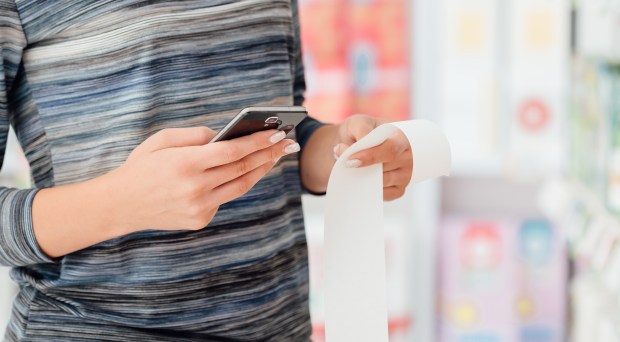Transforming Paper Receipts Into Actionable Data, Insights for UK Customers, Merchants

From mobile wallets and mobile banking to QR codes and contactless payments, the pandemic has pushed digital payments into a new era, transforming the way consumers and businesses worldwide make and receive payments.
However, despite this increase in payments innovation, very little has changed when it comes to payment receipts, more than 10 years after the invention of email receipts.
“In a world where you can pay for something using your watch, we’re still getting a paper receipt to mark the end of the transaction,” Tash Grossman, CEO and founder of digital receipts app Slip, told PYMNTS in an interview. “That’s just mind blowing to me.”
That problem is what the London-based retail startup has been tackling since it launched in 2021, as part of plans to disrupt the retail experience for both consumers and merchants with a simple mobile-based solution.
Customers can present a QR code included in the Slip app at checkout — the QR code can also be embedded into a user’s Apple or Google Wallet — and once the retailer scans it, instead of printing or emailing the receipt, Slip sends a digitized version to the user’s app in real-time.
“What we’re trying to avoid is the need to have a separate app for every single place that you shop,” Grossman explained. “We know from data that customers dislike that and although brands want you to download their app, they’re losing out on customer insights by insisting that that’s the [only] way to get a digital receipt.”
It’s also the reason why Slip is playing in the payment-agnostic, retailer-agnostic space, she noted. While its competitors leverage open banking or card linking to achieve a similar goal, the challenge there is that it limits the transaction view and creates an additional barrier when it comes to payments.
Actionable Data and Insights
In looking to solve the problem for consumers, Grossman said she stumbled across a retailer problem “which feels as significant, if not more significant,” around the data gap between online and offline data.
At first glance, email receipts might seem useful to merchants who can leverage the email information collected for marketing purposes. However, those email addresses barely provide any “powerful” data and insights around customer demographics and trends for retailers.
Moreover, the fact that people use multiple different email addresses for different things can make it challenging to comprehensively track the customer journey — whereas for consumers, searching for a digital receipt from a particular retailer can mean having the inconvenient task of scrolling through several weeks’ worth of messages.
But even though retailers see the need for the Slip solution, Grossman noted it can be challenging when legacy infrastructure is involved, as it creates long tech integration times compared to those retailers using modern systems.
“From an adoption perspective, we’re faced with a classic marketplace model where retailers want customers to be using Slip, but customers aren’t going to use it if there are not enough retailers [using it] — it’s the classic chicken-and-egg, Catch-22 [situation],” she explained.
Grossman continued that creating a real-time payment agnostic receipt solution is key because even though open banking has enabled FinTechs firms to easily access customer account information using application programming interfaces (APIs), that information is not available in real-time.
“I can go into Zara on a Monday, buy a jumper, decide by Monday night I don’t want to keep it, but on Tuesday, the transaction may not have cleared,” she said. “So, if I’m relying on the bank integration, the receipts are not real-time.”
Sustainability at Its Core
Slip is set to go fully live this summer, and given that most receipts are not recyclable, Grossman said there will be an important sustainability play as customers ditch harmful non-recyclable receipts for a greener, more environmentally-friendly alternative.
The company also has long-term plans to leverage the data it has accumulated to expand its product offering, with options to automatically sync receipts into expense management software tools or provide consumers with a detailed financial breakdown of how much they’re spending across different channels.
“We can tell customers how much they’re spending on clothing or on groceries, and because today’s customer doesn’t just use one payment method for everything — it’s the debit card for some things, credit card and PayPal for others — the payment landscape is so fragmented that the receipt is often the only single source of truth,” she argued.
This means that the ability to bring all that data together — whether it’s for expense management or spend tracking for financial management and planning — is a significant opportunity to “transform paper receipts into actionable data and insights for U.K. customers and merchants,” Grossman said.
Sign up here for daily updates on all of PYMNTS’ Europe, Middle East and Africa (EMEA) coverage.
